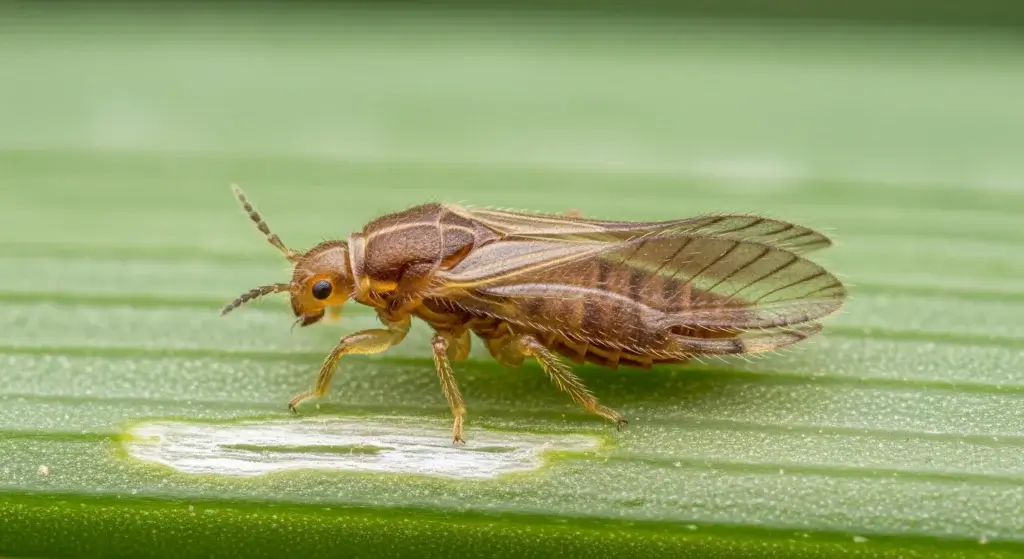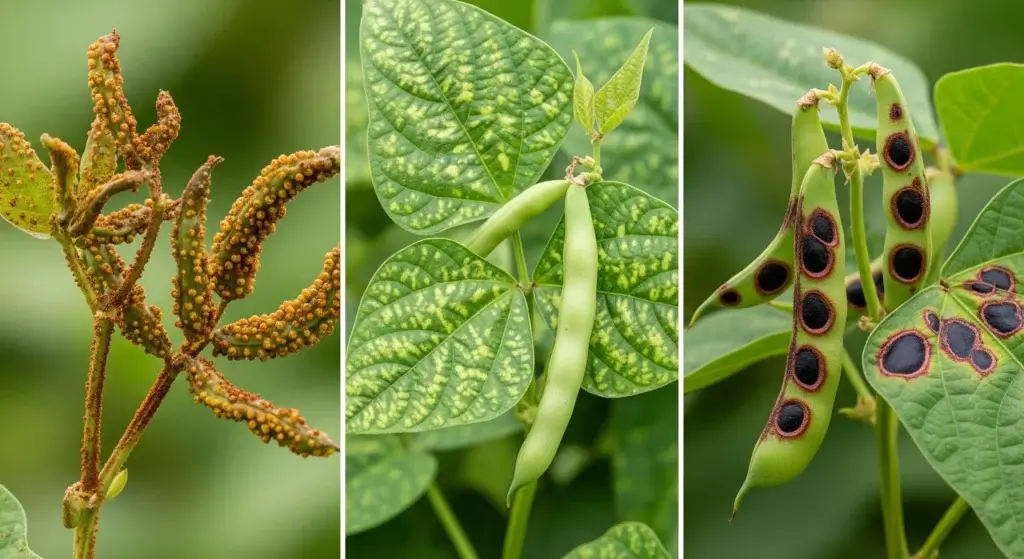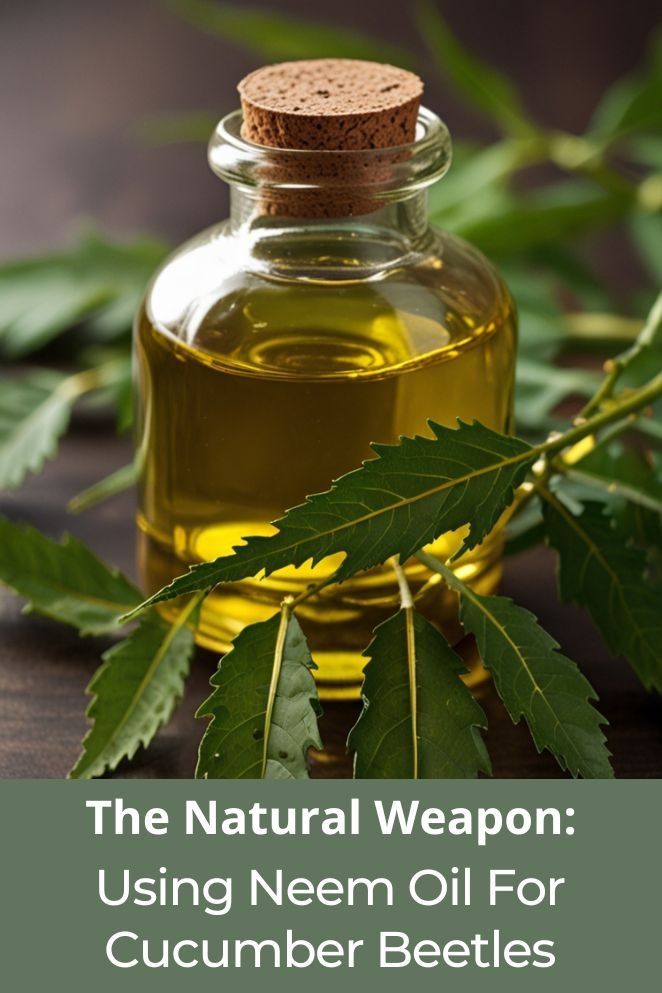
Cucumber beetles can be a nightmare for gardeners.
These tiny pests not only damage cucumber plants but also spread diseases.
If you’re looking for a natural and effective solution, neem oil might be your answer.
This blog post will guide you through everything you need to know about using neem oil to combat cucumber beetles.
About Cucumber Beetles
Cucumber beetles are common pests that can damage a variety of cucurbit crops, including cucumbers, melons, and squash.
There are two main types of cucumber beetles:
- Striped cucumber beetles (Acalymma vittatum)
- Spotted cucumber beetles (Diabrotica undecimpunctata howardi).
Appearance
- Striped cucumber beetle: are small insects about ¼ inch long. They have a yellowish-green body with three distinct black stripes running along their backs. Additionally, their head and antennae are dark-colored.
- Spotted cucumber beetle: also known as southern corn rootworms, are yellowish-green with twelve black spots on their backs (wing covers). They are similar in size to the striped variety.
Behavior
Cucumber beetles, both striped and spotted, attack the leaves, flowers, and fruits of cucurbit plants.
Both the adult beetles and their larvae can cause considerable damage, affecting the leaves and lowering fruit production.
The most severe issue with cucumber beetles is their ability to spread bacterial wilt disease.
These beetles carry the bacteria on their bodies and transmit it to healthy plants while feeding.
Bacterial wilt is a dangerous disease that can kill cucurbit plants entirely.
- Read also: Neem Oil for Vegetables – Benefits and Application Tips
- Read also: Neem Oil for Whitefly: A Guide to Effective Pest Control
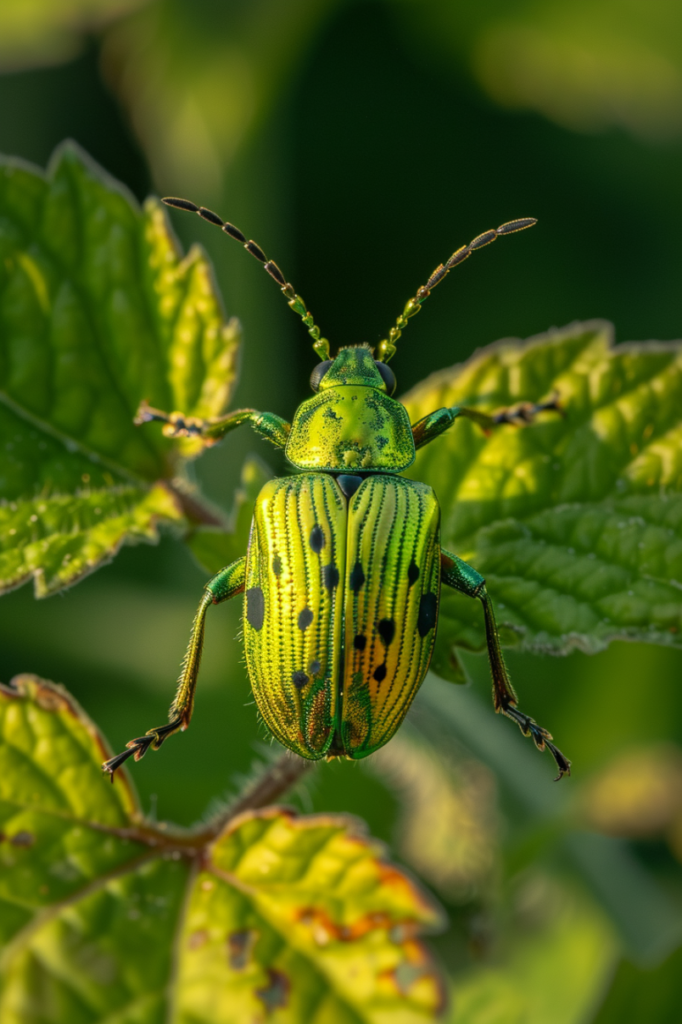
How Neem Oil Disrupts Cucumber Beetle Development
Neem oil disrupts cucumber beetle development in several ways, acting as a growth regulator and feeding deterrent.
Here’s a breakdown of how it works:
Insect growth regulator (IGR)
- Hormonal Interference: Azadirachtin mimics the natural hormones in insects, specifically the ones involved in molting and metamorphosis. When cucumber beetles ingest neem oil, azadirachtin disrupts the normal hormonal balance necessary for their growth and development. This leads to improper molting, developmental delays, and ultimately death.
- Larva and pupae development: Azadirachtin affects the beetle’s ability to transition from one life stage to another. It can prevent larvae from maturing into adults or cause malformed and non-viable pupae.
Feeding deterrent
- Antifeedent properties: Neem oil makes the plant unpalatable to cucumber beetles. The presence of neem compounds can reduce or completely stop feeding. When beetles ingest azadirachtin, it can cause stomach poisoning, leading to reduced feeding, starvation, and death.
- Behavioral changes: Even sub-lethal doses of neem oil can cause changes in the behavior of cucumber beetles, making them less likely to eat and more likely to abandon treated plants.
Reproductive inhibition
- Reduced egg laying: Exposure to neem oil can significantly reduce the fertility and fecundity of adult cucumber beetles. Females may lay fewer eggs, and the viability of the eggs can be compromised.
- Sterility effects: Neem oil can cause sterility in adult insects, reducing the population over time.
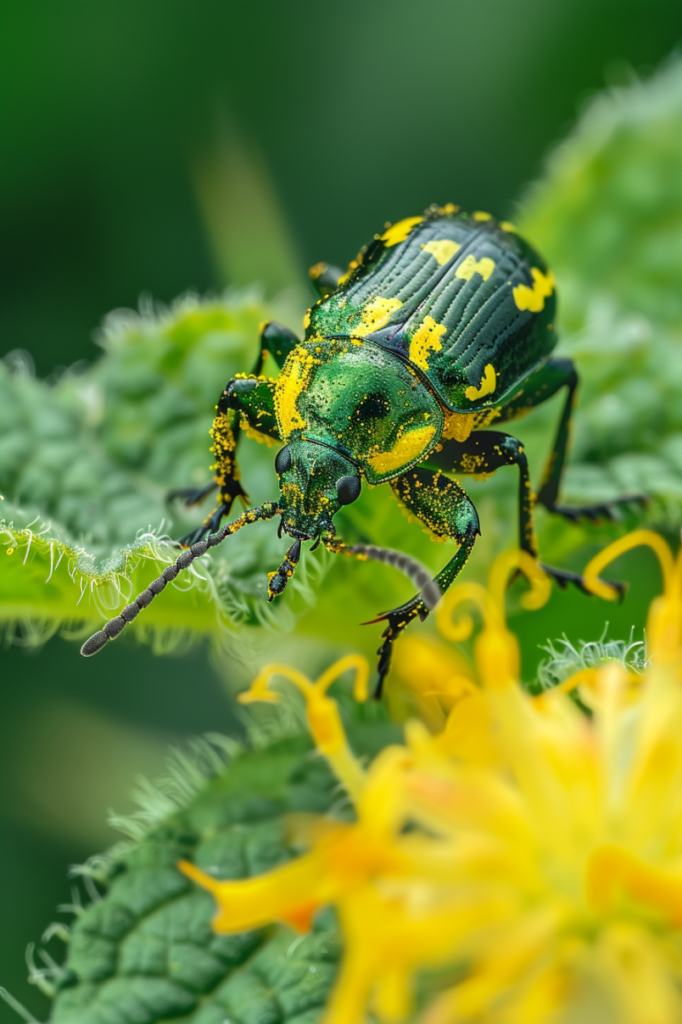
How to Use Neem Oil for Cucumber Beetles
Neem oil is derived from the seeds of the neem tree.
It contains azadirachtin, an active compound that disrupts the life cycle of insects, including cucumber beetles.
Here’s how to use neem oil effectively:
Step 1: Choose the right neem oil
Ensure you buy 100% cold-pressed neem oil.
Some products are diluted or mixed with other chemicals, which can reduce effectiveness.
Cold-pressed neem oil retains the highest concentration of azadirachtin.
Step 2: Prepare the neem oil solution
Mix neem oil with water and a small amount of mild liquid soap to help the oil mix with water. A typical recipe is:
Material needed
- 1 tablespoon of neem oil
- 1 teaspoon of mild liquid soap
- 1 quart of water
- Instruction: Mix these ingredients in a spray bottle, shaking well to ensure they combine properly.
Step 3: Apply the solution
Spray the neem oil solution directly onto the cucumber beetles and affected plant areas.
Pay special attention to the undersides of leaves where beetles often hide.
It’s best to apply neem oil in the early morning or late evening to prevent the solution from evaporating quickly in the heat and to protect beneficial insects that are less active at these times.
Step 4: Repeat application
For best results, reapply the neem oil solution every 3-4 days, especially after rain.
Regular applications can break the life cycle of cucumber beetles and prevent further infestations.
Store any unused solution in a cool, dark place. Shake well before each use.
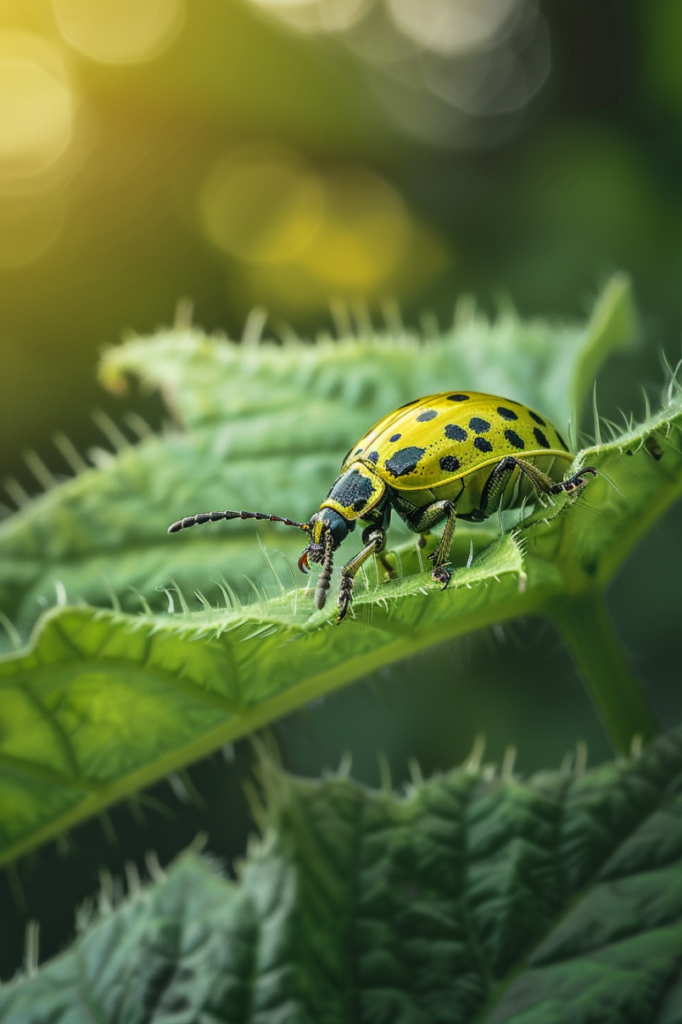
How to Make a Neem Oil Trap for Controlling Cucumber Beetles
In addition to spraying neem oil, you can create traps to catch and kill cucumber beetles. Here’s a simple method to make a neem oil trap:
Materials needed
- Yellow sticky traps
- Neem oil solution
- Small brush or spray bottle
Instruction
Step 1: Prepare the trap
Purchase yellow sticky traps that are available at garden centers.
Cucumber beetles are attracted to the color yellow, making these traps highly effective.
Step 2: Apply neem oil
Coat the sticky traps with the neem oil solution using a small brush or spray bottle.
The neem oil will act as an additional deterrent, killing the beetles that get stuck.
Step 3: Place the traps
Hang the traps around your cucumber plants, ensuring they are at beetle level.
Check the traps regularly and replace them as needed.

- Read also: Eco-Friendly Pest Control – How To Make a Natural Pesticide
- Read also: The Importance of Integrated Pest Management
Conclusion
Neem oil is a powerful, natural solution for controlling cucumber beetles.
By understanding the behavior of these pests and using neem oil correctly, you can protect your cucumber plants and enjoy a healthy, bountiful garden.
Regular application and vigilance are key to keeping cucumber beetles at bay.
FAQs
Yes, neem oil is generally safe for all plants. However, it’s always a good idea to test a small area first to ensure there are no adverse reactions.
Yes, neem oil is effective against a wide range of pests, including aphids, spider mites, and whiteflies.
Neem oil is less likely to harm beneficial insects if applied during early morning or late evening when these insects are less active.
It’s best to stick to the recommended concentration to avoid damaging your plants. If you have a severe infestation, increase the frequency of application instead of the concentration.

